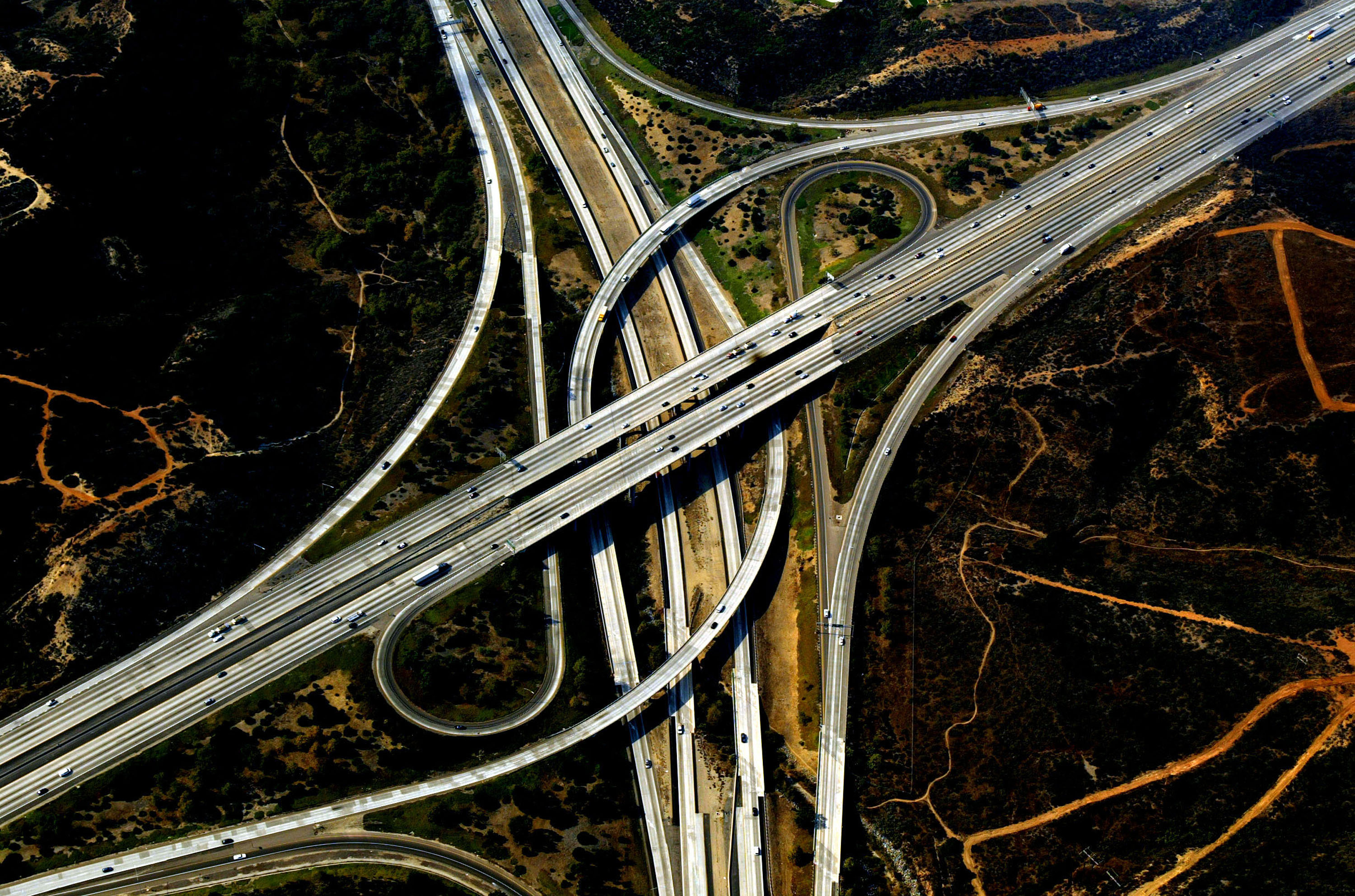Imagining the future of American public transit and ride sharing
And how Uncle Sam can lead the way


America's car culture is headed for a sea change. Ride-sharing businesses like Uber and Lyft are increasingly popular. Dense urban centers have more walkable designs, plus ever more bike lanes and public transit on offer. For younger Americans especially, rising inequality and financial precariousness make purchasing or leasing an expensive vehicle — which will spend most of its life parked — a a less-than-attractive lifestyle choice.
This is a really big deal, and not just for the way we get around. Forty-one percent of automaker profits come from new car sales. By 2030, industry forecasts show that dropping to 29 percent, The New York Times reported. That's a change of many billions of dollars. It's no wonder that major automakers like Ford and GM are already planning to expand into services like car sharing and even bikes.
And while America may never reach a future that is truly car-less, we are clearly headed for a future with far less cars. So what should American policymakers do to help guide us in that direction?
The Week
Escape your echo chamber. Get the facts behind the news, plus analysis from multiple perspectives.

Sign up for The Week's Free Newsletters
From our morning news briefing to a weekly Good News Newsletter, get the best of The Week delivered directly to your inbox.
From our morning news briefing to a weekly Good News Newsletter, get the best of The Week delivered directly to your inbox.
They can can start by getting behind a national system of high-quality, high-speed rail transit linking every major and medium-sized city in America. It would take many years and many, many billions of dollars to build. But America is already a laggard when it comes to national rail infrastructure. It's time we start catching up.
Within cities, the federal government should resurrect the policy of revenue sharing for municipal governments. There are about 40 cities that account for the bulk of Americans' commuting. The feds could reinforce city budgets with the federal government's borrowing power, allowing them to build extensive public transit systems of rail and bus lines that reach into their outlying areas.
This is where the future of the automobile comes in. The key issue is what's called the "first mile/last mile" problem — how people travel the short, daily trips from home to work, or to local shopping, or to public transit stations. Cars will inevitably remain the option of choice for these trips. But there's a wealth of opportunity for car-sharing services to conquer the "first mile/last mile" challenge.
One nice thing about these services is that unlike roads or pipes or other forms of physical infrastructure, it's a lot easier for multiple private businesses to service the same populations. As companies like Ford and GM get into the game alongside the likes of Lyft and Uber, they'll create the consumer benefits, cheaper prices, and efficiencies that come with competition.
A free daily email with the biggest news stories of the day – and the best features from TheWeek.com
Some cities are already experimenting with subsidizing citizens' rides with car-sharing services. That's worth expanding, but it should be done as an add-on to public transit rather than as a replacement.
Also, remember, the U.S. government already runs one of the biggest vehicle fleets in the country. It's called the U.S. Postal Service. Why not pour resources back into the USPS to offer a ride-sharing public option across the country — basically a public taxi service — as blogger David Phillippe suggested?
Any increase in public transit and car sharing is good for the environment, since it moves more people per unit of emissions. But moving to electric cars is trickier, since so much ride sharing is offered by individual car owners. Still, tax incentives and subsidies can be used to push companies like Uber and Lyft to insist on electric cars from their drivers, and to help individuals purchase those vehicles. Charging stations to provide for and encourage electric car sharing would also be a good public investment. If a public option or a major company like Ford moved into effectively providing its own taxi service using ride-sharing technology, it would be even easier to run their fleets out of central charging stations.
The government can also help individual car owners move to electric vehicles. Cars like the Chevy Volt already tackle the "first mile/last mile" problem by using an electric battery with just enough charge to cover the average daily commute. That keeps the battery smaller and the car cheaper, and there's still a gas engine that kicks in immediately when the battery dies. So the car can handle longer trips, but remains effectively all-electric for daily commuting, and charges every night in the garage using a normal electrical plug.
Federal, state, and municipal governments should use building codes to require developers to put an electrical outlet suited to car charging in every garage in every home. Parking garages and spaces where cars are parked for several hours — office buildings, apartment and condo complexes, airports, and more — should be required to have them in every parking space, too.
I know that many of these ideas are big and grand and expensive — and will probably need to wait until the Trump White House has run its course. But some are small-bore and can be implemented immediately. And they'll all help push American transit in a more egalitarian and environmentally friendly direction.
If our leaders start now, we can actually achieve a future where the nation is linked by high-speed trains, city dwellers zip around on high-quality public transit systems, and we all make those pesky short daily trips with electric cars — many of them operated by ride-sharing services.
But as David Dayen warned, America should be wary of the transit infrastructure of the future becoming the sole domain of Silicon Valley corporations. The federal government's unique fiscal and monetary powers give it far more freedom to spend and to borrow than anyone admits. The government can and should function as an ambitious economic actor in its own right, particularly when it comes to transit infrastructure. Let Uncle Sam take the lead on our greener, cleaner, and more efficient transit future.
Jeff Spross was the economics and business correspondent at TheWeek.com. He was previously a reporter at ThinkProgress.
-
 West Africa’s ‘coup cascade’
West Africa’s ‘coup cascade’The Explainer Guinea-Bissau takeover is the latest in the Sahel region, which has quietly become global epicentre of terrorism
-
 Daddy Pig: an unlikely flashpoint in the gender wars
Daddy Pig: an unlikely flashpoint in the gender warsTalking Point David Gandy calls out Peppa Pig’s dad as an example of how TV portrays men as ‘useless’ fools
-
 Codeword: December 3, 2025
Codeword: December 3, 2025The daily codeword puzzle from The Week
